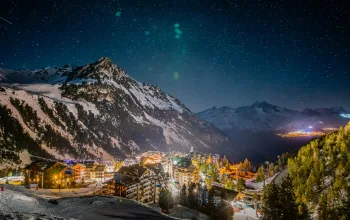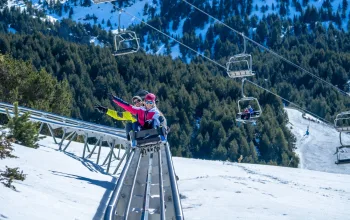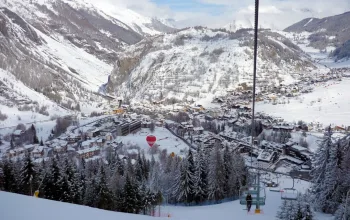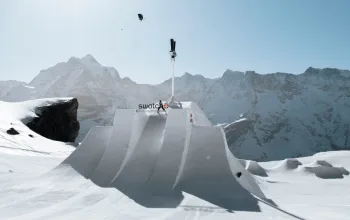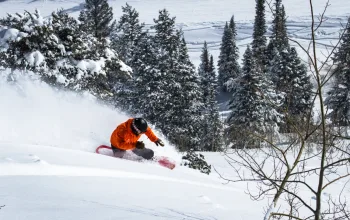Just five years later by 2015 this number had dropped to some 7.7 million. In fact, according to US industry association Snowsports Industries America, snowboard sales In America alone dropped some 25 percent over the same time, with participation in the sport dropping a whopping 28 percent from 2003 to 2013.
But why? After all, snowboarding was even finally accepted into the winter Olympics in 2014, in Sochi, with the die already cast for a big thrill Big Air event set to launch at the 2018 Pyeongchang Games in South Korea. Surely its stock is only set to rise again?
The thing is, the pressure has been bearing down on the whole global snow sport market since the financial crash of 2007, with even the white stuff itself proving less reliable over the last three years.
And then there’s the ‘rebirth of skiing’… a concept that only those who, like me, switched from skiing to snowboarding in the 1980s to mid 1990s will have any real perspective on. I’d got as far as I was going to get on skis and it wasn’t far enough – snowboarding offered an exciting, more fluid and to my eyes more rewarding challenge. There was no way I could ski powder in the 1990s with my skill and those skis. Snowboarding was different; it came alive in deep snow and even I could feel like I was surfing the mountain.
So-called millennials, those who came of age around the turn of the century, have been brought into a world where skiing can be just as radical and adventurous as snowboarding. Tribalism seems a thing of the past, and it’s no longer as much about what you ride as how you ride it.
When snowboarding first came along ski manufacturers were sitting on their laurels; middle of the road, middle-aged and middle of the piste, with little to offer those wanting to take to the air or the powder.
All that has changed with the advent of shaped, dual tip and fat skis, which have made skiing more versatile and easier. Now skiers can hit powder bowls or halfpipes, rails or ramps, and pull tricks or land switch just as easily as snowboarders. What’s more, they’re better for glades and moguls than snowboards and much more forgiving to learn on.
No surprise then that in a world where snowboarding no longer has the exclusive on ‘cool’ or tricks, ski sales in the US alone have actually risen 1.5 percent since the recession, according to US retail association SnowSports Industries of America.
In terms of participation, skiing has declined far less than snowboarding too, with just a drop of 1.5 percent between 2003 and 2013. Anecdotally these trends have been very much reflected in Europe too.
Another reason for snowboarding’s fading popularity is that many of those who, like me, started in the 90s have been raising young families in the last ten years. Not only has this and the recession kept many away from their favourite, though expensive, sport but now the kids are older and the economy somewhat recovered, many might be choosing to go back onto skis with their young families, instead of snowboarding alone.
But is snowboarding really dead, or even dying? We don’t think so. Some even point to the offspring of those early adopters, many of whom see mum or dad’s turns and want to have a go themselves – especially in the terrain parks. My eight year old is one of those – three weeks into skiing and he’s now added a day on board too. Will he switch? Probably not.
But what about this 45-year-old snowboarder? Am I ski curious? Would I switch to skis? Yes but no; the old adage ‘you can’t teach an old dog new tricks’ prevails for me. But would I snowboard if I was starting out on the snow now – or even if today’s skis had been available when I switched all those years ago? Probably not…




